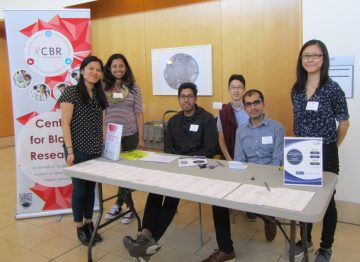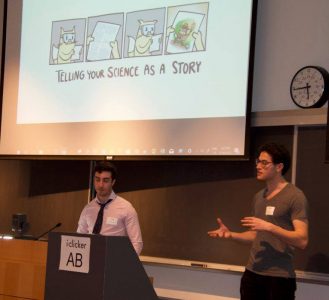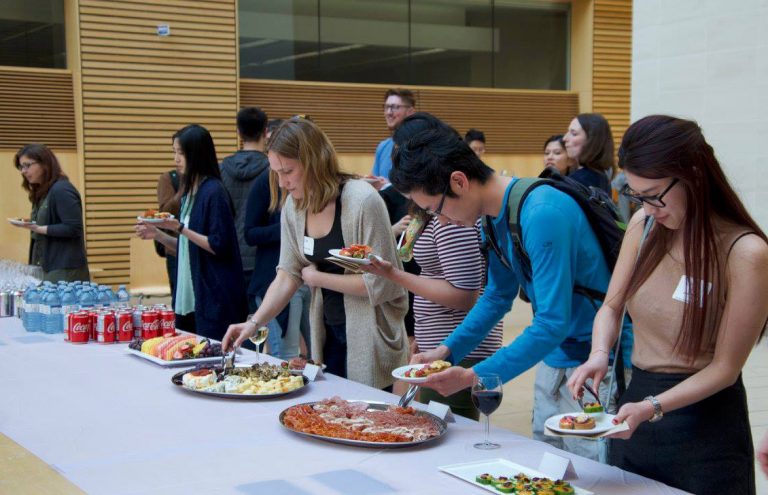 By Katharine Sedivy-Haley, PhD Candidate, Hancock Lab
By Katharine Sedivy-Haley, PhD Candidate, Hancock Lab
On April 26th, the CBR hosted the Symposium on Effective Communication in Science. The Symposium, organized by the Graduate Award Program (GAP) students, featured four speakers who shared their expertise with science communication, and offered advice for researchers wishing to develop their communication skills. Throughout the presentations and at the post-event reception, attendees were given opportunities to practice and discuss science communication. Congratulations to the GAP students for a successful event!
Dustin Homeniuk, Account Manager at Octapharma Canada Inc, discussed his career as an industry representative and account manager. His career path involved communicating with physicians about a wide variety of pharmaceuticals including therapeutics for hemophilia. Mr. Homenuik related his experience attending an open-heart surgery in order to see the pharmaceuticals in action. Industry communicators can work in a variety of areas, including medical science liaisons (who primarily interact with physicians) and within regulatory divisions that work closely with Health Canada. Individuals in these careers leverage a strong scientific background to understand the products and often attend conferences worldwide. Mr. Homenuik advised attendees that “If it’s a ‘thing’, a company probably makes it and markets it”. Therefore, if you are interested in a product and want a career in communication, find the relevant company, and make it clear how you can help them with the challenges they face. Mr. Homenuik also recommended finding people with the job you want and holding informational interviews.
Brian Kladko, Communications Manager for the Faculty of Medicine, shared a variety of examples of discoveries from UBC researchers that gained outside media attention, including the Kastrup lab‘s work on “Frankenplatelets,” covered by Science Newsline. Mr. Kladko described the benefits that communicating science can have for a researcher’s career, for institutions, and for the public – inspiring future scientists and sharing discoveries that may improve health and well-being.

Communicating science may not come naturally to researchers. However, there are several strategies that may be practiced to improve communication skills, including focusing on the story of the research and its impact; using pictures, models, and analogies; and knowing (or guessing) what elements of the research your audience considers important. As an exercise, Symposium attendees framed their discoveries as tweet-sized research announcements. Mr. Kladko invited attendees to reach out to him when their research is accepted for publication.
Where Mr. Kladko alluded to approaching the story of a discovery, Armin Mortazavi and Koby Michaels from SciCats really dove into the subject. Stories tap into the way that the brain naturally works, which makes them an understandable and memorable way to package information. Fortunately, narrative structure can be applied to scientific discoveries! Mortazavi and Michaels worked with attendees to frame their research using the basic narrative structure:
“__ and __, but __; therefore __.”
They also elaborated on the structure of the hero’s journey, and two important lessons it holds for scientists. First, embrace and share your failures. Doing so will help the audience to understand the process and challenges of the research, rather than seeing science as a black box that chews up money and spits out technology. Second, recognize that research is a cycle. The cycle starts with a question or problem, and the conclusions of the research naturally lead to new questions and further research. The story of research includes the conclusions and often an idea of what will happen next.



